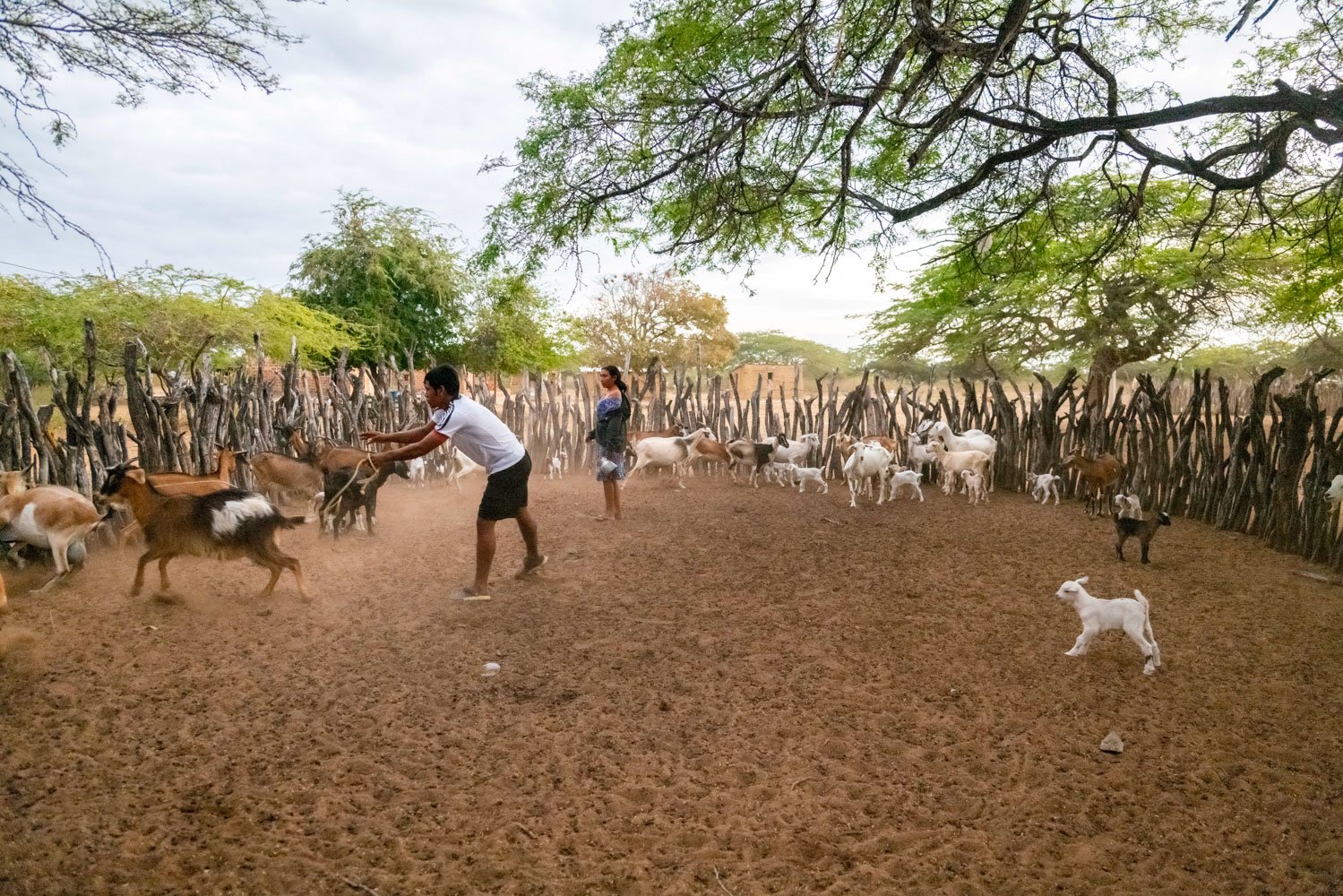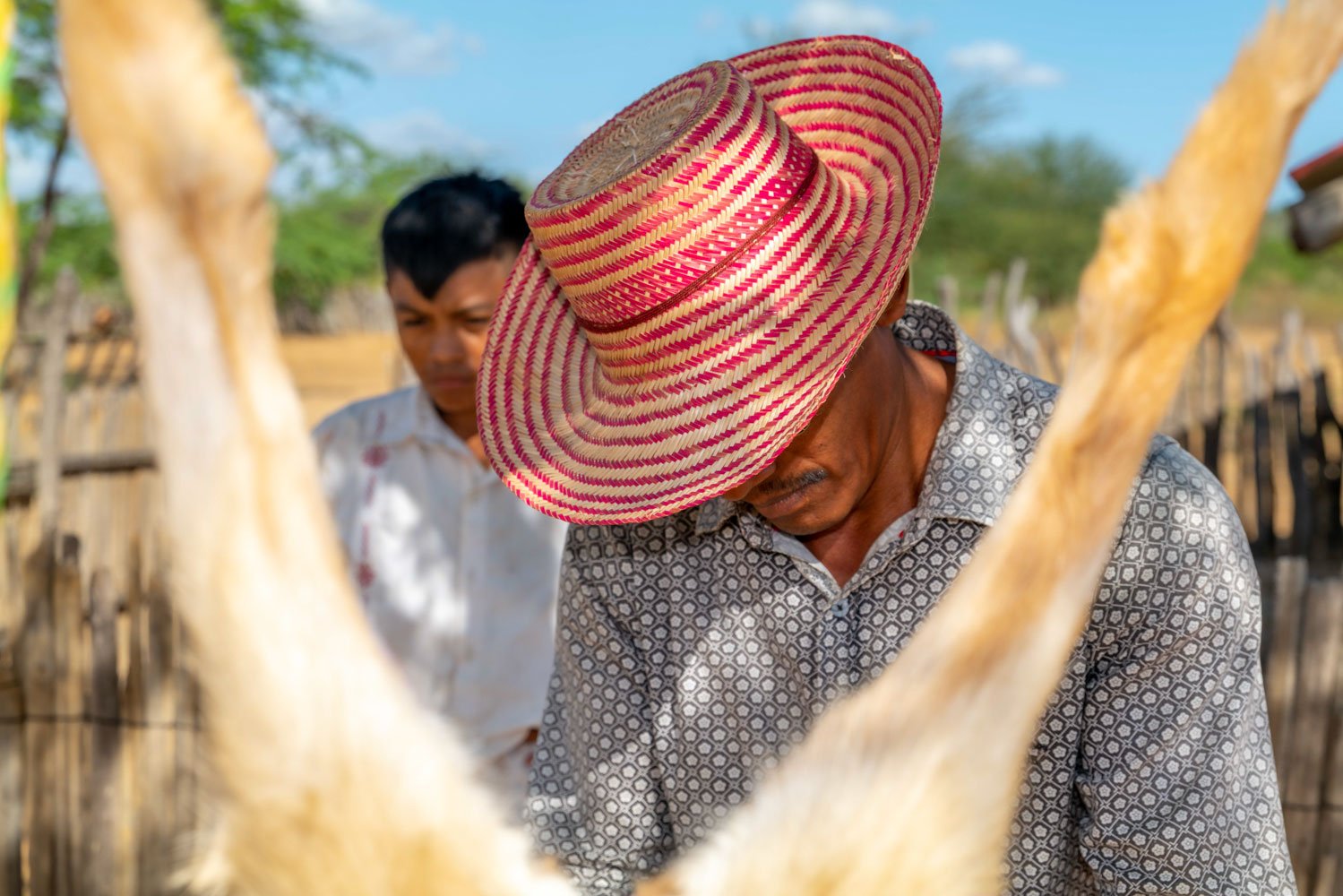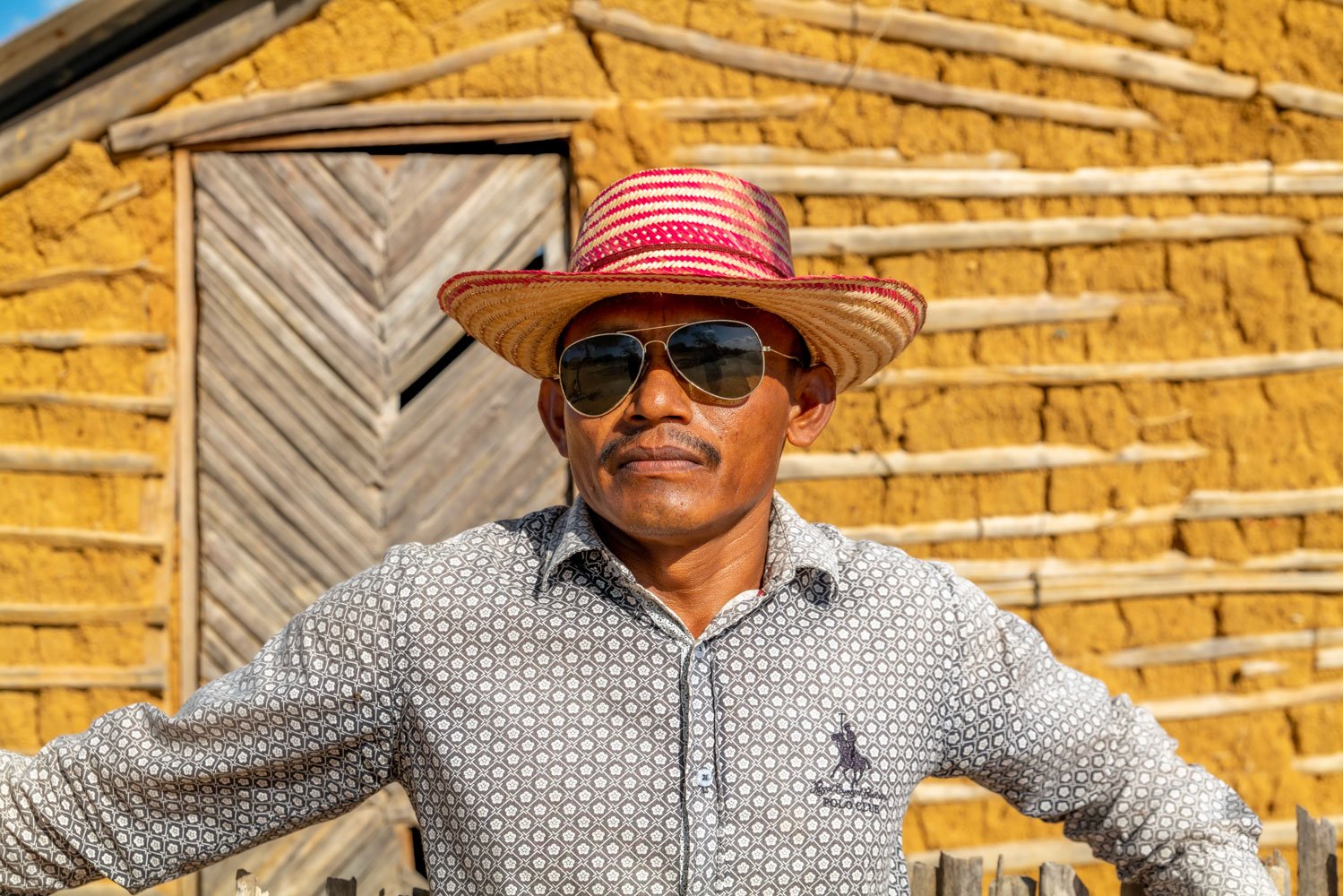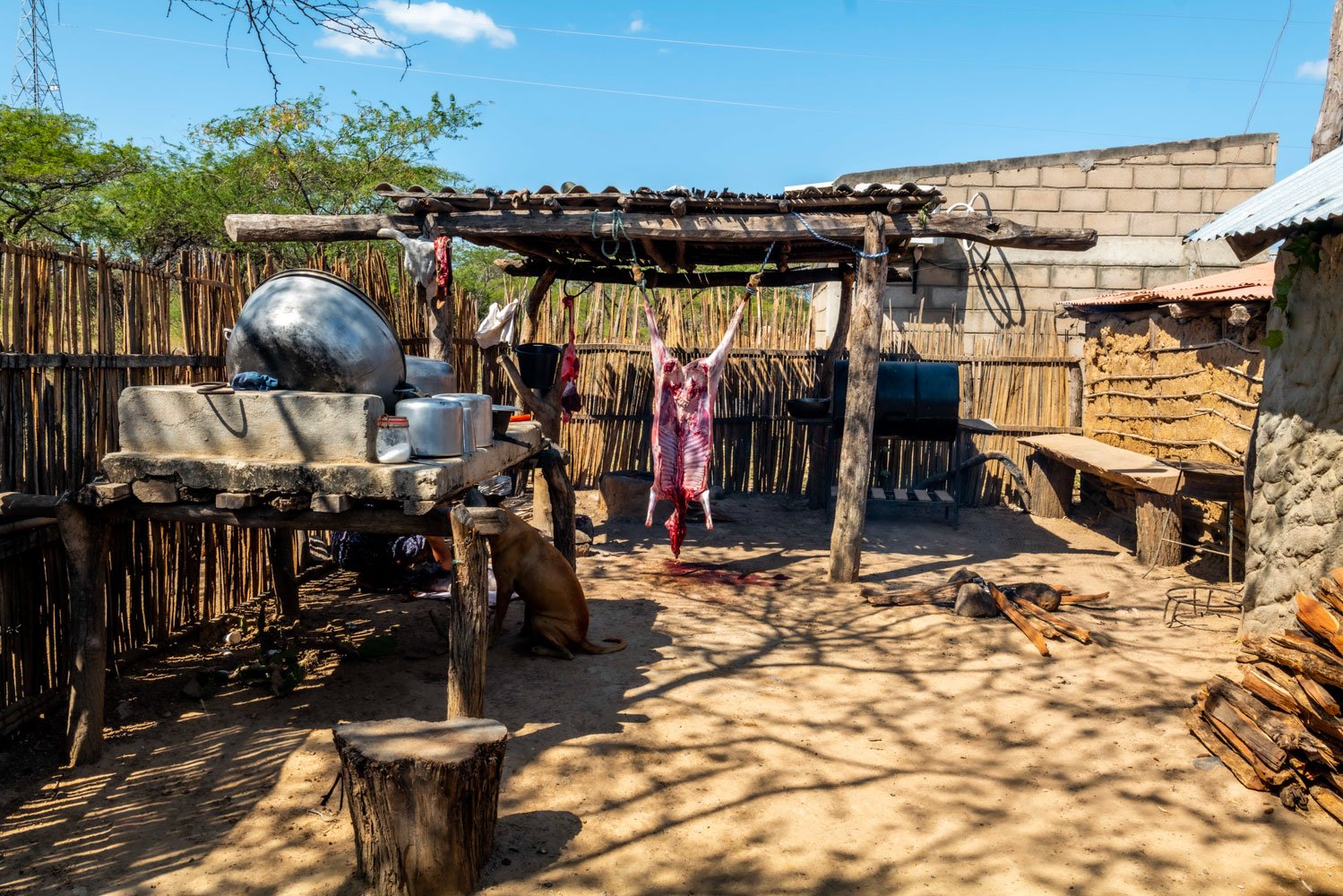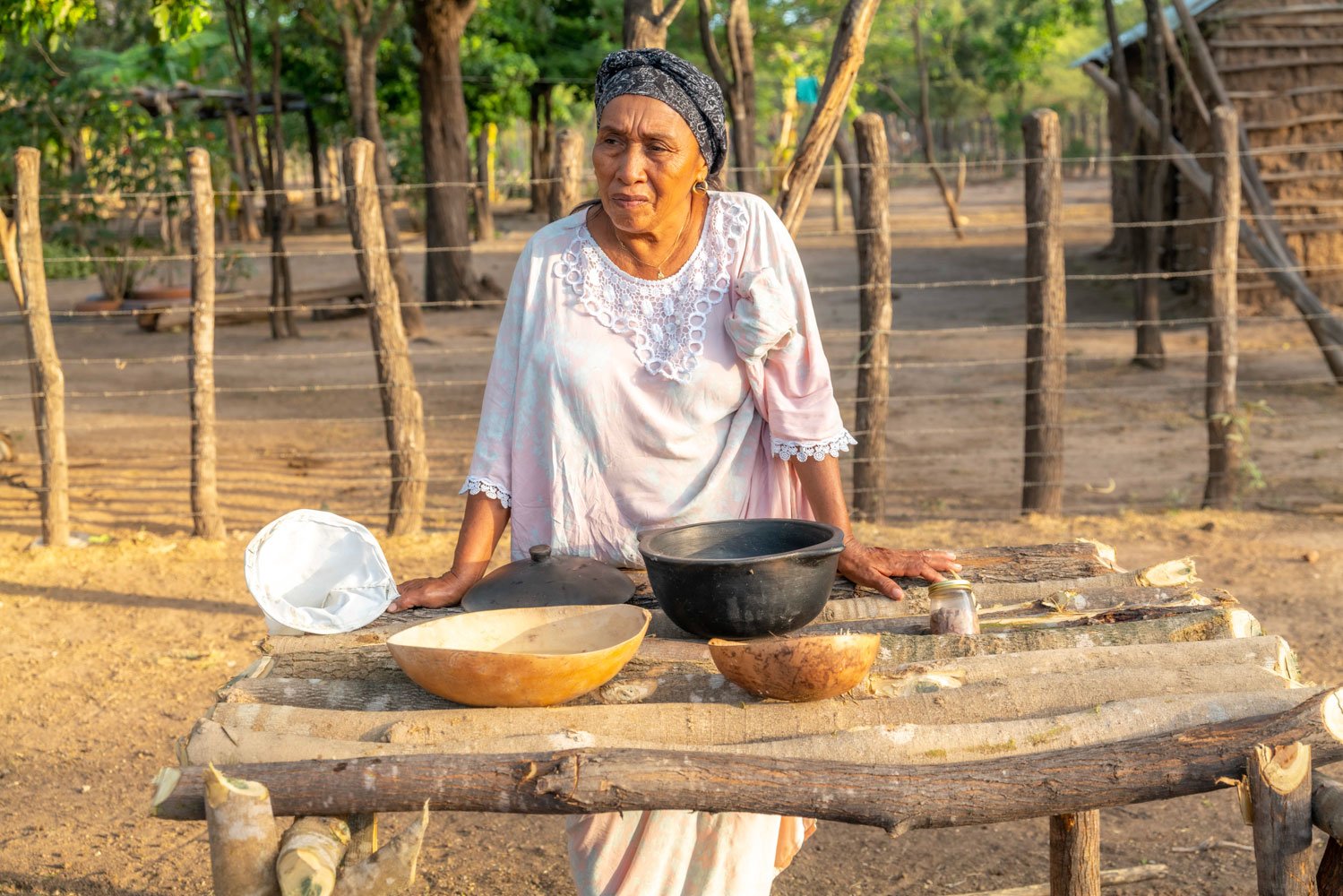A CLAN OF GOATS.
Photos: Alejandro Osses Text: Karim Ganem Maloof (QEPD)
Goats are sturdy animals, well designed for enduring the hardships of the Guajira’s desert, amid Colombia and Venezuela’s northern tip. They will eat any vegetation that would be spurned by bigger cattle and will comparatively produce higher quantities of milk with less pasture and water. The Wayúu people, indigenous inhabitants of this salty wasteland that slides into the Caribbean Sea, have cherished these ruminants for centuries, and have turned them into a treasure of symbolic and economic significance.
The size and quality of a livestock defines status and wealth among the clans of this matrilineal indigenous community. Goats are used as currency and each herd is a savings account that produces interests and ensures liquid assets for future needs, such as payment for conflicts or dowries. Wayúu people enforce their own customary law recognized by both the Colombian and Venezuelan governments. Their mediators, appointed by each extended family, are called palabreros, which could be translated as “wordcarriers”, since they “bring” the word from one clan to another to try and solve conflicts. Usually, those conflicts are appeased by the exchange of any amount of goats and other valuables (such as necklaces, cows, motorcycles or even the specific weapon used to harm or kill the victim), a fee that compensates the damage and inclines the balance of justice. In order to avoid family wars and stop the spilling of human blood they pawn their goat’s.
These shepherds raise their animals letting them roam freely among the scarce shrubs of their territory. They rarely sell them in markets, only when strongly needed, and mostly sacrifice them and share their meat in special occasions such as desentierros (periodical unearthing of a family member) or when receiving special visitors. Most of the meat is usually salted and dry under the rough sunlight for it to last for weeks or even months without refrigeration.
In this narrative photo-essay we recount our journey through the Guajira peninsula from the perspective of this human-animal relationship, conveying the many angles of the Wayúu’s connection to goats: From their significance to the culture and traditions of this desert dwellers, to the practical aspects of the animals’ breeding, shepherding, milking, making of cheese, and commerce. We were witness to a palabrero’s gathering were they agreed on a fee to amend a mishap. We registered elegant and dexterous sacrifices in rancherías –traditional clan settlements in indigenous reservations–, to painfully long agony in public market’s slaughterhouses in the main cities of the peninsula, where you could see many goats’ fur tinted with a blazon that revealed their clan of origin. A voyage through many reservations and the cities of Riohacha, the region’s capital, Uribia (dubbed “Colombia’s indigenous center”), Manaure, land of the salt, and Maicao, were stands one of the biggest mosques in our continent, and the Wayúu people live side by side with a big Levantine community that also praises lambs and goats.
Along the trip, we examined the cutting and curing of the meet, a variety of cooking methods and tasted many delightful traditional dishes, such as friche, a goat meat assortment only dressed with salt and slowly stewed in it’s own fat –and a dish that represents the humble essence of their cooking and of their landscape: salt, little water, fat and meat; its modest dressing usually comes from the astonishing salt mines in the coastlines of Manaure, also the main ingredient for drying and cooking of the meat, and the tanning of leather.
An intensely visual and fascinating voyage beneath the desert sunlight, accompanied by many members of the community, from shepherds and traditional cooks, to poets and palabreros that enlightened us about their practices.


